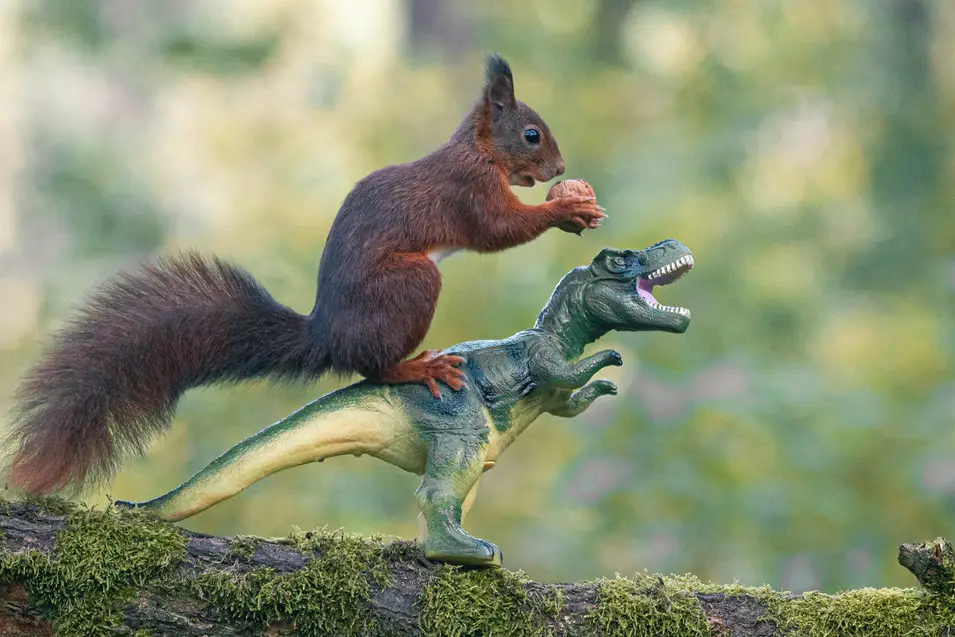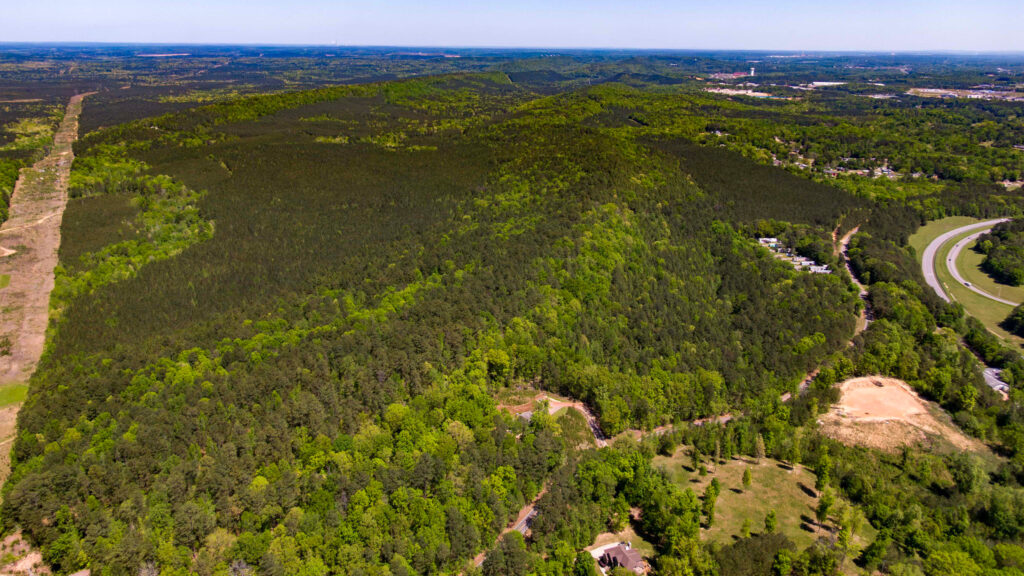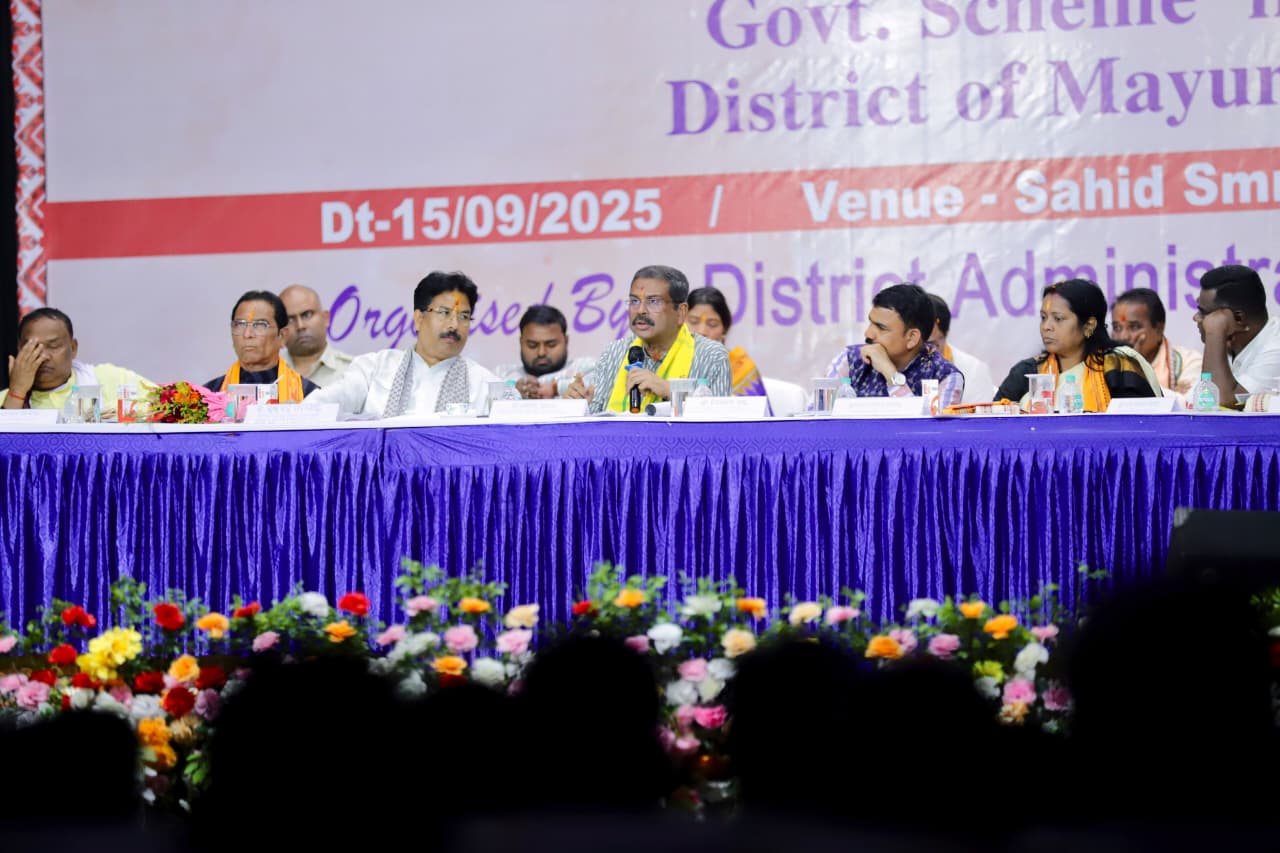By Sarah Ingram
Copyright metro

Niki Colemont takes photos of squirrels and shares them on Instagram to share nature’s joy (Picture: Niki Colemont)
Niki Colemont had been around squirrels for most of his life, but until the aged of 29 he’d never even noticed one – probably because his rough start meant he had bigger issues to contend with.
His early years were spent in Rwanda, where Niki’s mother died just three months after she gave birth to him. In another horrific twist, his father was killed in the run-up to the Tutsi genocide, when Niki was a toddler.
While the emotional scars of such traumatic events from a young age are hard to quantify, the physical marks are evident.
Talking to Metro over Zoom from his home in Belgium, Niki dips his head to reveal a number of marked bald patches all over his crown from a parasite that ate his flesh as a toddler.
‘There was no hygiene in Rwanda. We grew up in very unhealthy situations, without any medications. So I have scars from wounds that never healed,’ he explains.
Niki as a child (Picture: Niki Colemont)
When Niki was four and his sister, Soni, 10, the pair were evacuated as refugees and adopted by a white Belgian couple who had two older children.
‘It was strange to go to a new country. I didn’t understand anything; what was red or green or left or right. I didn’t have any knowledge of how things worked and it was hard to adapt.
‘I was grateful that I had my sister around me, because I didn’t speak Dutch. I had to learn everything from scratch. It was difficult and scary’, he remembers.
While he appreciates the home, education and health he received in Europe, Niki felt isolated and insecure as a child.
‘I was a stranger in a new country where everyone was white, so I had a feeling that I didn’t belong. I had to go to different schools almost each year because I was so behind. I was always standing in a corner, scared to talk to anyone. I didn’t know how to socialise and it was a long time before I made friends or became comfortable,’ he says.
Niki and his sister in the refugee camp (Picture: Niki Colemont)
It wasn’t until he was 10 and fluent that Niki found his way in the world. He grew up, went to work in automotive manufacturing and, in his early twenties started taking nature and landscape photos on an iphone for fun.
Then, the chance encounter with a squirrel in 2016 changed his life.
Visiting his girlfriend Ine’s grandmother he spotted the creature as he took a walk around her garden.
‘I heard a sound from the bush, and I stood still. There was a red squirrel five meters from me. I didn’t move, and it came closer and closer and almost ran front over my feet,’ he remembers.
Watching intently, Niki was bowled over by the little animal’s movements, playfulness and sense of curiosity.
‘I had never seen a squirrel in my whole life. I knew they existed and I had seen them on television and in magazines, but this was my first encounter. I I couldn’t believe what I was seeing as I watched him running all over the garden.’
The first photo that Niki took of a squirrel in 2017 (Picture: Niki Colemont)
Niki immediately went out and bought a squirrel feeder and a wildcam so he could observe the creature’s movements. Every time he returned to visit he would refill the feeder and watch patiently. After three months, one squirrel had become four and Niki was overjoyed as he watched them open the feeder to reach the walnuts inside with their little paws.
Next, he set up a hide in camouflage and bought himself a new 600mm lens for his Nikon camera so he could take close-up images.
‘I began to experiment with props, first putting a sausage can in with sunflower seeds inside it so I could get a great picture. My first experimental image was of the squirrel putting his head inside to reach the seeds.
‘I did it mostly for a joke, but also because I’d never seen anything like this on the internet before. I wasn’t sure if it would even work. But when I put it on Facebook, to my surprise, people really loved it.’
The creative freedom that Niki gained from taking photos of squirrels was like an escape for him (Picture: Niki Colemont)
When the squirrels suddenly disappeared three years later, Niki transferred his hide to a forest near his home in Genk. He now spends up to eight hours a day there – without stopping to eat or use the loo – snapping the creatures in whimsical situations he sets up with children’s toys including dinosaurs, a motorcycle, miniature shopping carts and a Barbie Cabriolet and princess carriage.
‘Squirrels normally interact purely out of curiosity but sometimes I will scratch the prop with a walnut so they pick up its scent or put a nut inside so they have to work for their food,’ Niki explains.
They frequently make him laugh, too. When he first set up a dinosaur to play with it took three days before a squirrel worked up the courage to retrieve the nut from its mouth. A few days later Niki returned to see the animals had shattered the dino’s face.
‘Another time, I had a unique experience with two young squirrels. They came to the feeder at the same time one sitting inside, the other on top. The one inside got stuck because his brother was sitting on the roof, blocking the way out. I had to laugh quietly in my tent; it was a pure comedy moment.
‘Going from zero to something really creative was something I found really peaceful. Watching nature is so absorbing, it really takes you out of your head.’
In 2019, Niki received the devastating news that his sister Soni had been found dead in her flat at the age of 39. Heartbroken, he was left with so many unanswered questions – about what had happened to his sister, who he was and where he had come from.
Camouflage is essential, so Niki can get the most authentic photo possible (Picture: Niki Colemont)
Fortunately, Niki later rediscovered his love for photography (Picture: LOCShots)
‘I never had the opportunity to say goodbye,’ Niki says sadly.
‘It was difficult to build a deeper bond with her because she was often unreachable. Sometimes, I wouldn’t hear from her for six months at a time. Looking back now, I regret not trying harder to reach out and stay close to her. A piece of my past has died with her.’
Bereft and with no energy or purpose, Niki couldn’t pick up his camera for weeks.
‘Then one day, my girlfriend’s grandmother called me to say that a squirrel was eating in the garden. At that moment, I realised how privileged I was that they were still visiting,’ he remembers.
‘In nine years of photographing them, I’ve seen two squirrels die. It’s devastating to know that cars can take their lives so easily. I know it’s part of nature, but it still feels deeply sad. I don’t like to give them names because that would make it too personal.
‘What gives me hope is knowing I’ve captured them in pictures I will always have those memories to look back on.’
After finding inspiration again, Niki set up an Instagram account The Squirrel Man, which has amassed thousands of followers. He has been named a finalist in competitions around the world and won the National Geographic Award in 2022 and the World Nature Photographer Awards this year.
Niki experiments with props, to add fun to the nature he captures (Picture: Niki Colemont)
But more importantly, he finds real joy in sharing the squirrel’s antics with others.
Niki estimates that he has spent 23,000 hours outside observing the ‘intelligent and clean animals’.
‘They brush their tails and wipe their mouths on a branch after eating a walnut,’ he explains. ‘They are persistent and never give up. But they’re not perfect. They make mistakes just like we do.’
He says he sees his own personality in the squirrels; curious, intelligent, but slightly chaotic. ‘They forget where they bury their stash. I forget where I put my car keys’, he laughs.
But most importantly, they bring him instant happiness, says Niki.
‘They make me forget everything. These lively creatures gave me strength, purpose, and endless smiles. Through my photography I want to showcase their intelligence, humour, and uncanny human-like behaviours – without digital manipulation.
‘I strive to capture the pure joy and resilience of these wonderful animals, to bring momentary happiness and relief to those who see my work. I find hope in nature – and I hope others do too.’



